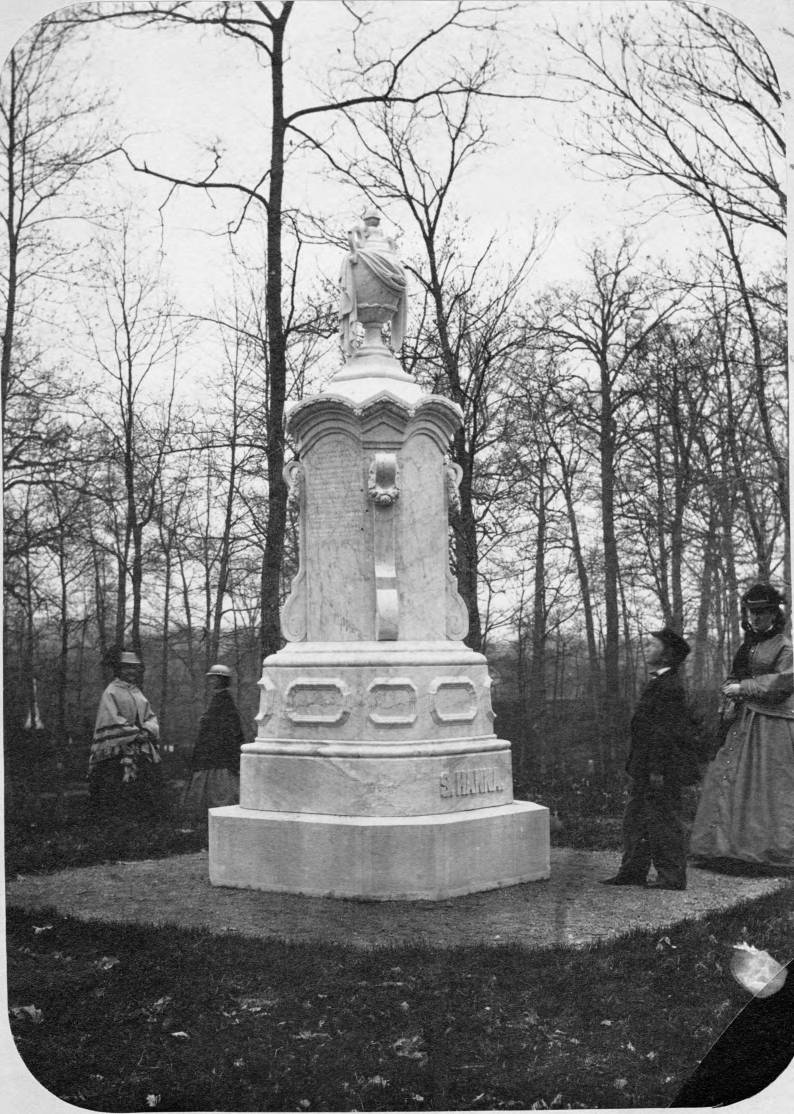Our ancestors arrived from other continents at various times finding existing diverse habitats with native plants and animals similar but often different from their homeland. Allen County, Indiana was originally dense oak hickory forests with some prairie areas, wetlands such as Eagle Marsh and Little River Wetland in southwest Allen County and the Great Black Swamp that stretched from eastern Allen County northwest through Ohio to Lake Erie. See our Trees page. Some of our ancestors brought their favorite plants and animals for food, pets, and economic reasons eventually changing the habitats of this New World
. Modern technology advances enable researchers to show that over time our activities are changing the native habitat where native animals and plants successfully co-exist together. Every year it becomes easier to find examples of wide spread problems with non-native plants, animals, and diseases. Native pollinators are vital to pollination and reproduction of many native plants. These changes are affecting the survival of many native species often costing taxpayers millions of dollar and untold volunteer hours to stop and try to reverse negative changes. Our Maps page shows aerial, border, street, and highway changes over time, our Timeline page shows history milestones, and our Wildlife pages will show changes.
FWIW I took horticulture classes at Purdue University in 1993, bought my first computer so I could easily write reports and bought my first software a genealogy program called Family Tree Maker by Banner Blue on floppy disks. I joined a new organization called Indiana Native Plant Society of Indiana as a charter member in 1993. In the late 1990s, I worked one summer season with a local native plant restoration company. We collected prairie plant seeds in various locations mostly in rural locations on the east and west side of Allen County, indicating that local prairies did exist at one time. Over the years I took photographs and a few videos of ancestor tombstones in cemeteries across Indiana and Ohio. In the early days some cemeteries were overgrown, neglected, and often had heirloom plants perhaps planted at the time of burial or later by family members. Some had ornate wrought iron entrance gates and fences, others likely recycled the iron during WWII metal scrap drives. A few cemetery entrances in Allen County have changed over those decades and I hope to add photos to the cemetery pages when I can. Over the years technology has introduced affordable power tools and herbicides allowing cemetery maintenance to remove many native and heirloom plants. Cellphones with cameras and the internet allow anyone to easily document changes. As coordinator of Allen INGenWeb since 2009 I have felt I should do something to document these changes while I still can. Like our landscape, these pages started in Spring 2024 will change over time.
Lindenwood Cemetery is east across Lindenwood Avenue from Lindenwood Nature Preserve which shows what the cemetery grounds looked like back when the cemetery began in 1859.
The Samuel Hanna grave, Lindenwood Cemetery, Fort Wayne, IN. after he died in June 1866 in the
Allen County Public Library Digital Collections at the
Allen County Public Library. The photo with a white obelisk tombstone in the background behind a tree on the left appears to show the early graves in Lindenwood Cemetery founded in July 1859 were literally buried in the existing forest. The cemetery currently has many big old trees but with wide open spaces between them. See Samuel Hanna and our Trees page.
[ This needs a Then and Now comparison photo. See our Lindenwood Cemetery page ]
Wednesday, May 15, 2024 post by Lindenwood Cemetery on Facebook:
Pardon the detours on the cemetery grounds today. We have a few trees being removed for safety reasons.
[ See our Lindenwood Cemetery page. The
Allen County Public Library Digital Collections at the
Allen County Public Libraryhas many historic photos of gardens in the cemetery in the early 20th century. Their Facebook page shows some recent improvements. A recent drive through the Catholic Cemetery shows recent tree plantings along the roads in open areas. A recent photo in the newspaper shows a bald eagles nest in a tall sycamore tree in the Catholic Cemetery.]
Wednesday, May 15, 2024 post by the Historic Southwood Park Neighborhood Association on Facebook:
You might think this photo was taken in England... but it's right here in Fort Wayne. We continue to highlight some houses that are featured in the 2008 Southwood Park Historic District brochure for National Historic Preservation month!
Kenneth & Elizabeth Bechtel House (original owners)
4319 Indiana Avenue
Tudor Revival, c. 1925
Only a small percentage of Tudor houses have stucco as the primary wall surface. The steep roof, prominent stone chimney, half-timbering and casement windows are classic Tudor features. The stone foundation and entry arch are nice details. Bechtel was employed at S.F. Bowser Company, manufacturer of gasoline pumps.
Thursday, May 9, 2024 post by Johnston Farm & Indian Agency on Facebook:
We are beginning to work on restoring the front garden at the Johnston House. Not only did this require physical labor to reveal the garden that was abandoned over a decade ago, a great deal of research is going into what sort of plants and vegetables, etc. belong in the garden. Mr. Johnston stated that his garden had all of the things common to a good garden common to the Atlantic states. Contrary to many beliefs, this meant a garden rich with items that could be dried or preserved in another way to get an Ohio family through the long, cold winter.
Some of these foods can be gleaned through a search of John Johnston's letters.
[ John Johnston was an Indian agent in the early 1800s Fort Wayne until 1811 and several of his children were the first "white" children born in Fort Wayne, Allen County, Indiana. See John Johnston family, Forts of Fort Wayne, and Indians Native American pages ]
#piquaohio #Piqua #historichouses #19thcenturyhistory #historichouse #19thcenturyhistorynerd #miamicoutyohio #historicgarden #historicgardens #historicgardening
Wednesday, April 22, 2015 post by the Virginia Native Plant Society on Facebook:
“The last word in ignorance is the man who says of an animal or plant, “What good is it?” If the land mechanism as a whole is good, then every part is good, whether we understand it or not. If the biota, in the course of aeons, has built something we like but do not understand, then who but a fool would discard seemingly useless parts? To keep every cog and wheel is the first precaution of intelligent tinkering.”
Aldo Leopold
Back to top

